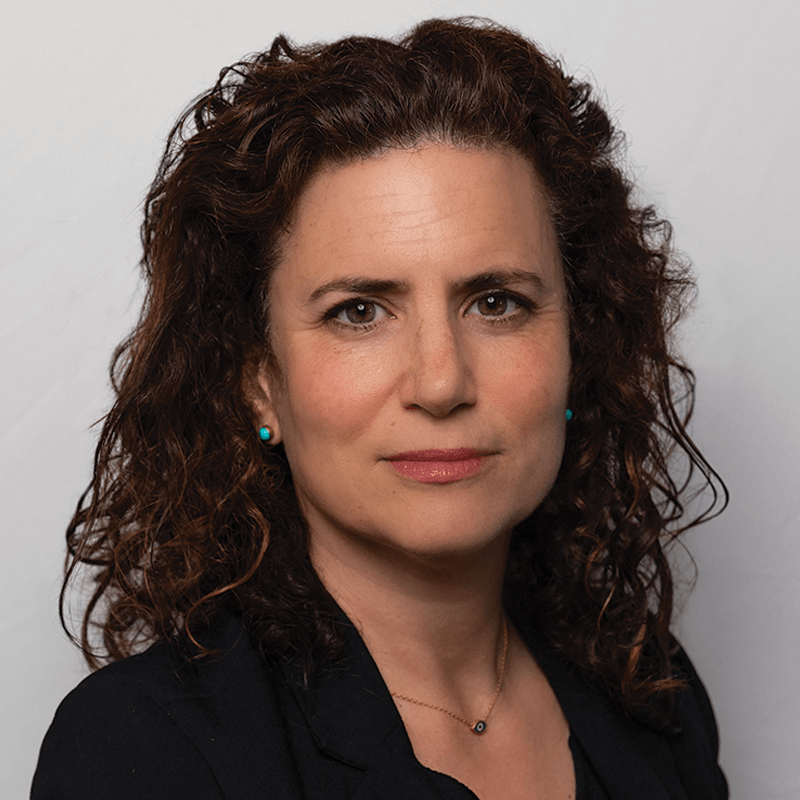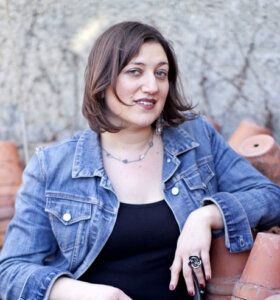A book written in Ladino. Photo by Getty Images
This Sunday is Ladino Day in New York — a vibrant celebration of the language that was central to the culture of Sephardic Jews worldwide for more than 500 years. Right now, Ladino is having an unexpected moment in pop culture, with appearances on Netflix, The New York Times crossword puzzle, and in a fantasy novel on the bestseller list.
Ladino is one of the most important diasporic languages in Jewish history. Also known as Judeo-Spanish, or Judezmo, Ladino is a Romance language — a variety of Spanish that includes both words and phrases from Hebrew, Turkish, Arabic, Greek, French and Italian. It originally developed in medieval Christian Spain; after the expulsion of the Jews in 1492, it moved along with Jewish exiles, and then developed independently of Iberian Spanish. For 500 years, Ladino thrived, and was the mother tongue of generations of Sephardic Jews.
If you think you’ve noticed snippets of Ladino lately, you’re right.
“The first popular Netflix show, Kulup (The Club), used Sephardic consultants in Istanbul to get many of the details right, and afterwards, The Beauty Queen of Jerusalem was a longer series that kept people watching and hearing Ladino,” said Jane Mushabac, a writer and important figure in the Ladino world whose work will be performed Sunday.
Mushabac’s dramatic narrative telling the story of the expulsion of the Jews of Spain first appeared on NPR in 1992 — the 500th anniversary of the Alhambra Decree, or the Edict of Expulsion. It’s a moment in history that transformed the direction of the Jewish people. Mazal Bueno: A Portrait in Song of the Spanish Jews will be performed again, live, at the celebration. The piece is close to Mushabac’s heart, and she was honored to be commissioned to write it.
“I’d been brought up on Sephardic history my entire life by my Turkish Jewish parents, even though both Greenwich Village and a Long Island suburb where we lived were both decidedly Ashkenormative. My parents traced their ancestry to Spain, proud that their ancestors had accepted exile instead of submitting to forced conversion,” Mushabac said.
The original version was narrated by actress Tovah Feldshuh. This year’s version will star Julie Benko who was described by The New York Times as the “2022 breakout star for theater”.
New York’s Ladino Day will also feature Rachel Amado Bortnick, another prominent figure in the Ladino world. AmadoBortnick grew up in Izmir, Turkey, and will share “Tales from Ladinokomunita,” described as “the groundbreaking worldwide online correspondence circle she founded and directs.” Through Amado Bortnick’s initiative, people from all over the world are now writing to each other in Ladino.
Though the specifics of Ladino Day celebrations vary by location, the essence of what it is remains the same.
“Ladino Day is a public celebration of the Judeo-Spanish language and its many varieties as well as Sephardic culture; it acknowledges the history, resiliency, and hope of its speech communities,” said Bryan Kirschen, a professor of Spanish Linguistics at Binghamton University and co-director of the American Ladino League.
The celebrations are a way to say—“endangered no more.”
“A language that is regularly categorized as endangered and moribund, native to communities that have experienced exile and persecution for generations, Ladino takes center stage each year not only to recognize the past but to celebrate the fact that speakers and learners as well as communities and universities come together to celebrate Ladino’s rich history, while highlighting new literary, artistic, and linguistic works in the language,” Kirschen said.
You don’t need to have any familiarity with the language at all, to participate. In fact, Ladino Days around the world often provide a good introduction. And planning Ladino Days has strengthened the language community.
“For some programs, such as the one we host in New York City, planning begins six or seven months in advance,” Kirschen said. “Excitement about Ladino Days often generates interest from local communities and allows for opportunities to brainstorm, network, create, and rehearse in the language, leading to in-person and, in recent years, online experiences that keep audiences engaged and interested in participating in Ladino-related activities throughout the year.”
While many Ladino Days involve in-person performances and community gatherings, interestingly, the idea originated online.
“The idea for an annual Day of Ladino, or International Ladino Day, was first proposed in the online correspondence group Ladinokomunita,” Kirschen said. “In January 2013, Zelda Ovadia of Israel, who was born and raised in Turkey, wrote a message—in Ladino — asking the forum’s more than one thousand members for their thoughts on selecting a date for what she hoped would become an annual celebration of the language.”
“The response was overwhelmingly positive, as speakers and learners of Ladino from around the world began planning local celebrations.”
The idea kept getting more and more support.
“The National Authority for Ladino, along with its president at the time, Yitzhak Navon, Israel’s 5th President, enthusiastically supported the idea. Soon, communities around the world — from Turkey to Spain and from Argentina to the United States — began hosting lectures, concerts, plays, and roundtable discussions in and about Ladino,” Kirschen explained.
Since Ladino Days started, the profile of Ladino has risen. For example, Ladino is definitely appearing more often in contemporary American literature. Elizabeth Graver’s Kantika, a Sephardic multi-generational saga, won the National Jewish Book Award and was selected as a New York Times Notable Book of 2023. Michael Frank’s One Hundred Saturdays: Stella Levi and the Search for a Lost World , which portrays Frank’s encounter with Stella Levi, who grew up in the Juderia of Rhodes, Greece, was a finalist for the 2024 Sami Rohr Prize.
“I guess I must report the cherry on top, that a 2025 New Yorker crossword puzzle had a clue that said “______ Kandelikas” (you guessed it: ocho),” Mushabac said.
“We’ve made it out of the Sephardic cultural ghetto to a seat at the powerful Ashkenazi table. But have we? For many of us, the most exciting development for those actually brought up with Ladino, or those attending Sephardic synagogues, or those serious Sephardic wannabes that thrive on what I’ll call the Sephardic vision, the most exciting story really is our getting to know one another in unexpected places, ranging from academic conferences to museum exhibits, where we have found ourselves pointing at the same spot on a map of Turkey,” Mushabac said.
Celebrations around the country are also growing in number—and are usually held at this time of year..
“The Sephardi Federation of Palm Beach County just held their 11th annual Ladino Day celebration, which featured a concert. Here in Seattle, where I live, we just celebrated the city’s 12th annual Ladino Day, featuring the fantasy writer Leigh Bardugo,” said Hannah Pressman, co-director of the American Ladino League.
If there is no Ladino Day celebration near you, there may be one soon.
“One thing the American Ladino League definitely wants to do is to encourage more local communities around the country to organize their own Ladino Day celebrations, on the scale that works for them, and provide support to help make these programs possible,” Pressman said. “If you can dream it up — we want to help make it happen.”
Though there is a lot of joy associated with Ladino, it’s impossible to forget that the language is closely tied to the expulsion from Spain. I wondered if this year was different, with an American president threatening mass deportations.
“I do feel the history of Spanish Jews connects to the present moment,” Mushabac said, when I asked her about it. “Jews deported from Spain in 1492 could not be easily compared to migrants being deported today from the U.S. For one thing, the Jews had flourished in Spain for over a thousand years, and they had achieved prominence in many fields, and owned significant amounts of property, all very different from the migrants who today are already being targeted for deportation.”
“Nonetheless, I find the two situations have something in common, the underlying animus, the cruelty, the impunity of the leaders involved in initiating and carrying out these orders,” Mushabac said. “Plus the unawareness of how important the Jews were to Spain back then, and the migrants to the US, and how terribly self-destructive is the impulse for ethnic cleansing of one stripe or another.”
Tickets to Ladino Day can be purchased through the American Sephardi Federation. Sephardic hors d’oeuvres will be served after the program. Mazal Bueno: The 8th Annual New York Ladino Day! – The American Sephardi FederationThe American Sephardi Federation

I hope you appreciated this article. Before you go, I’d like to ask you to please support the Forward’s award-winning, nonprofit journalism so that we can be prepared for whatever news 2025 brings.
At a time when other newsrooms are closing or cutting back, the Forward has removed its paywall and invested additional resources to report on the ground from Israel and around the U.S. on the impact of the war, rising antisemitism and polarized discourse.
Readers like you make it all possible. Support our work by becoming a Forward Member and connect with our journalism and your community.
— Rachel Fishman Feddersen, Publisher and CEO

